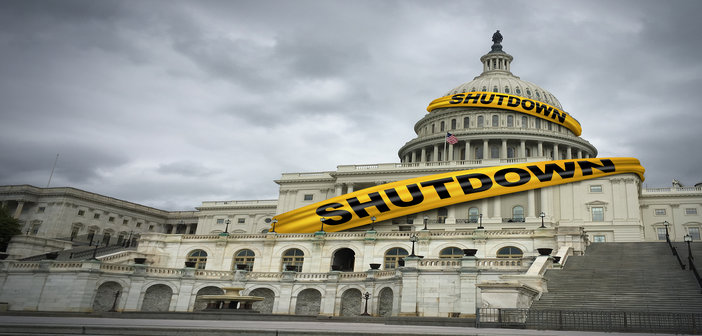NOAA employees furloughed by the current partial shutdown in the USA have been forced to take up new positions to supplement their income. In one such publicized case, Frank Ruopoli, a graphic designer and illustrator for NOAA in Charleston, South Carolina, had managed to use his volunteering experience as an emergency medical technician (EMT) to land a part-time job at the local hospital. Commenting on the shutdown to National Public Radio, Ruopoli said, I feel a little betrayed by our politicians. You know they take an oath of office to serve our country and I do the same. I got into this many years ago and I chose to, in a way, serve my country and I expect the same out of my politicians. The absence of NOAA and NASA representatives was felt at the 99th American Meteorological Society (AMS) Annual Meeting in Phoenix, Arizona, and served as a poignant reminder of the impact of the shutdown on ongoing research and the wider meteorological community. AMS estimated that around 700 individuals who had planned to attend the event were forced to stay away due to the shutdown and as a result, several presentations had to be canceled. A statement by the AMS Council read, Those of us who study and predict the atmosphere are familiar with the impacts of uncertainty. Americans rely on weather forecasts, and they trust them to be reliable. Lives and livelihoods are saved or lost based on the timeliness and accuracy of a single weather warning. Unfortunately, the current US government shutdown and the associated uncertainty is now beginning to seriously set back efforts to better understand and forecast our environment and protect the nations health and prosperity. National Weather Service forecasters who work without pay during a shutdown, like their peers in other essential government services, experience mounting financial and emotional stress. Years of research are jeopardized when federal scientists cannot collect uninterrupted data. When government researchers no longer maintain collaborations with their peers in academia and industry, our nation, and each and every citizen, loses out. The uncertain length of a shutdown adds to its costly and corrosive effects. Like a chain reaction, the impacts of a government shutdown ripple far beyond those who are furloughed and can impede development of new scientific technologies that are vital to our nation. Many non-government contract employees are already on forced time off without pay and experiencing severe financial and personal hardship; we may lose the benefit of their knowledge and capabilities as a result. In compliance with the terms of a partial shutdown, weather, water and climate observing, prediction, forecast, warning and support services are to be maintained by federal employees without pay. However, most research activities at NOAA (excluding real-time regular models on research computers used for hurricane and FAA flight planning) have been suspended. The third partial shutdown of the US government began on December 22, 2018, after the United States Congress and President Donald Trump were unable to agree on the appropriation of funds for the 2019 fiscal year, primarily a request for US$5.7bn in federal funds for a US-Mexico border wall. The partial shutdown has resulted in a lapse in funding for nine federal departments affecting about one-fourth of federal government activities and approximately 800,000 federal employees.
NOAA employees turn to alternative employment during partial shutdown



